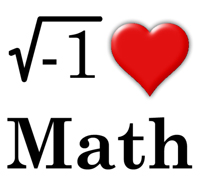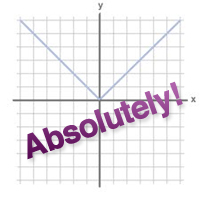 Today’s SAT Question of the Day is a great algebra question that can be solved in two different ways.
Today’s SAT Question of the Day is a great algebra question that can be solved in two different ways.
If x + y = 3 and x – y = 5, then x2 – y2 = ??

 Today’s SAT Question of the Day is a great algebra question that can be solved in two different ways.
Today’s SAT Question of the Day is a great algebra question that can be solved in two different ways.
If x + y = 3 and x – y = 5, then x2 – y2 = ??
Today’s SAT question of the day is a math question about the following number line:

They also tell us that ![]() . Continue reading
. Continue reading
Today’s ACT math question of the day is about dividing with remainders. The remainder, you may or may not recall, is the part “left over” when we divide one integer by another. For instance, if I divide 4 by 3, I get 1 with 1 left over, so my answer is 1 remainder 1 or 1R1.
One more practice round before we go on to the problem: 14/6 = ? Continue reading
 Today’s SAT question of the day is a math question that’s rated easy. Follow along with me to see if that’s true – and to avoid falling into a common trap.
Today’s SAT question of the day is a math question that’s rated easy. Follow along with me to see if that’s true – and to avoid falling into a common trap.
For all test questions everywhere, we have to remember to answer what the question is asking. Today’s question asks us the following:
If √x = 16, √4x = ?? Continue reading
 Today’s ACT question of the day is a math question about absolute value and number properties. Remember the basic fact about absolute value: everything that comes out of the bars is either positive or 0. Kind of like coming out of prison?
Today’s ACT question of the day is a math question about absolute value and number properties. Remember the basic fact about absolute value: everything that comes out of the bars is either positive or 0. Kind of like coming out of prison?
Anyhow. If we have that fact with us, we can answer this question. Continue reading
 Today’s SAT question of the day is a medium-difficulty math question that involves some basic algebra…and multiplying by 4. (I’ll wait while you get your calculator for that last part … ….)
Today’s SAT question of the day is a medium-difficulty math question that involves some basic algebra…and multiplying by 4. (I’ll wait while you get your calculator for that last part … ….)
We are told that there are two machines: X and Y.
Machine X works at a rate of X bolts per hour.
Machine Y works at a rate of X + 6 bolts per hour.
They want to know how many bolts are produced, total, in four hours. So, first, we have to figure out how many bolts are produced in one hour. Continue reading
Today’s ACT question of the day is a repeat of the question we just saw on January 22 about applying the Pythagorean theorem and simplifying radical expressions.
Instead of going over it again, let’s take a moment to remember at least one Pythagorean triplet (3, 4, 5 – a great time save on test day if you know how to apply it).
And, for practice, simplifying another radical expression:
√108 = √(9 * 12 ) = (9 * 4 * 3) = 3√(4 * 3) = 6√3
Check:
6^2 = 36
36 * 3 = 108
Today’s SAT question of the day is a math question about function notation (the way functions are written). This question is rated medium difficulty…maybe it’s just my years of tutoring talking, but I thought it was more like mega-easy (I solved it in less than10 seconds).
A function is just a relationship between values, right? When x changes, y consistently changes in a related way. And functions are written in a special format:
f(x) = ……
which means that “f of x”, or the function relating to x, is whatever appears on the other side of that equal sign.
This question also asks us about slope, so let’s think of what we know about slope: Continue reading
Today’s ACT question of the day is asking: do you know the Pythagorean theorem, and can you simplify a radical expression?
If you do and can, this is a 20-second question. If you don’t, you should the Pythagorean theorem now: a^2 + b^2 = c^2. That is, the square of the length of each side (or “leg”) of a right triangle is equal to the square of the length of the hypotenuse. This theorem makes an appearance dozens of times in various ways throughout your test, so keep it with you.
Now that we’ve got that out of the way, let’s apply it! Continue reading
Today’s SAT question of the day is an arithmetic question that can be solved successfully in two ways: the long way and the short way.
The question starts like this:
![]()